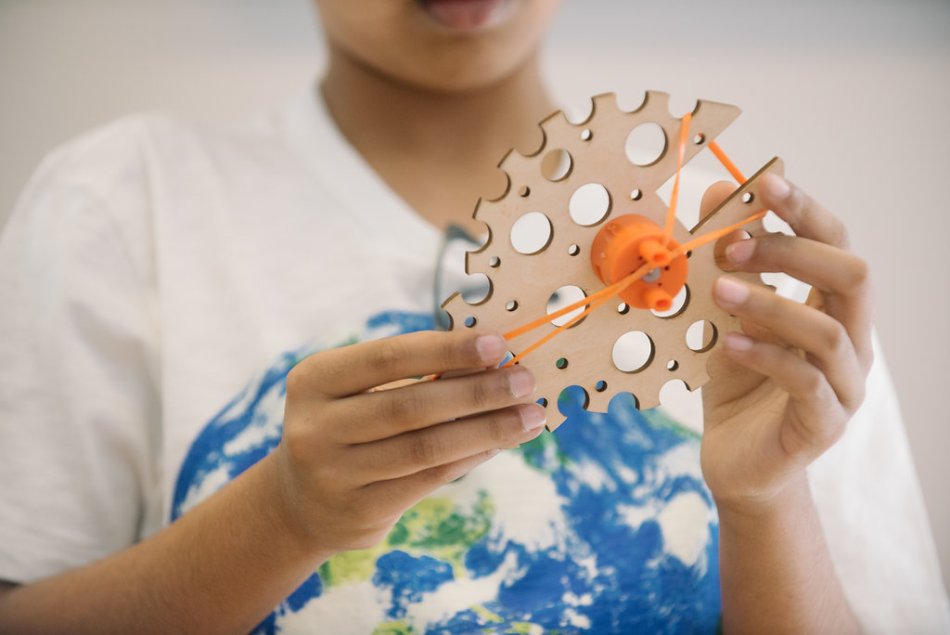
OR


Usha Pokharel
Usha Pokharel is an educationist and author of several children’s books.usha@pokharel.net
Tinkering is important to help children understand how things work and how they are made.
"I have not failed. I’ve just found 10,000 ways that won’t work." -Thomas Edison
Recently my screen time significantly increased. I am not surprised because I have definitely increased my computer time since the pandemic. I started surfing the web for various topics of interest. I also searched to look at the curriculum for pre-kindergarten and kindergarten students used by various schools around the world.
I had plenty of time to explore, as there was nowhere to go during the pandemic. One day, I came across a school in Connecticut, USA, that looked very interesting. I decided to look further into their curriculum. I was surprised to see tinkering as one of their curricular activity. This was the first time I saw tinkering used for learning.
I am sure you are thinking, what is tinkering. I understand tinkering as an attempt to repair or improve something. Sometimes, it is focused and purposeful, leading to successfully generating new ideas. Tinkering is also the process of experimenting with materials and ideas to understand a person’s capacities. It is also to further perform the action drawing on their previous knowledge and learning to find better solutions to current problems.
It is also to work with something that works and make it work better. Tinkering is also about hands-on experiences, including learning from failures. It is an unstructured time spent to explore and invent or even improve on something that already works to make it work better. Within the process of exploration and invention lie the potential for innovation and invention. You see tinkering is all about exploring through fiddling, toying, messing, pottering, and dabbling with a diverse range of materials that are available in a creative pursuit to make, mend or improve. Most of you are thinking about the importance of tinkering.
Tinkering is important because it answers children’s questions. It helps children understand how things are made and how they work. Often, the process of satisfying their curiosity raises more questions. This helps keep children focused on their pursuit of knowledge. This unstructured time dedicated to exploring and testing ideas sometimes leads to invention. Tinkering is all about hands-on experience and provides unstructured time to explore and invent. This also leads to learning from failures and trying again and again, and not giving up.
Accepting failure is important because it leads to invention and opens up opportunities for innovation potential. This reminds me of times I got interested in a variety of things during my childhood. I remember tinkering with my father to make a functional train with multiple compartments linked to each other out of matchboxes. I used to drag it around the house. It was one of the coveted toys that moved on wheels among the children in the household during our stay in Kolkata and everyone took turns to drag around the house. I still remember opening up a transistor radio to see how it worked. I used to look at baba as he worked to fix it. Later I did the same thing. All these tinkering gave me the courage to open up gadgets that did not work and fix it. Later in life, I taught myself to repair various household gadgets, thus becoming self-reliant.
Parents want their children to be self-reliant because every parent wants the best for their child. Especially because we are gradually moving towards the times of new innovations and inventions. Under such circumstances, every parent wants to prepare their children for do-it-yourself movements in their life. To get ready now is the time to provide children with cardboard boxes, rolls of tape, tools, and a lot of free time to explore and experiment. I know it puzzles parents. Do they have to outfit their homes and classrooms with all kinds of gadgets and tools that are beyond their budget and comfort zone? No, you do not have to do that. All that is necessary is to provide your children with opportunities to explore materials, take things apart, and imagine alternative possibilities to invent.
Let them take apart low-cost things that work with the condition that they will put it together in working condition. Help them do it systematically so they can put it together later on. Also, provide them the time to tinker. So, tinkering is important to help children understand how things work and how they are made. Taking apart provides children the opportunity for focused and unstructured time to explore and test ideas. This is the heart of invention.
Finally, tinkering is about puttering around with different gadgets and machines. It is about playing with materials and figuring out how to disassemble and assemble just about anything. Tinkering for young children involves problem-solving, risk-taking, collaboration, experimentation, and creativity. It encourages children to engage in long-term projects designed with classroom thematic studies. Tinkering is trying again regardless of failures. Teachers use tinkering as a bridge to move across the boundaries of engineering and education. This promotes the ethos of play and experimentation. So, let your children tinker. I am sure parents can also provide their children opportunities at home to tinker. Who knows, you might enjoy tinkering with your children. Right parents?
You May Like This

Evidence-Based Policy Making in Nepal: Challenges and the Way Forward
“Life and health can never be exchanged for other benefits within the society.” With this vision, the Swedish Parliament in... Read More...

Nepal's Seismic Struggle and Ongoing Recovery Dynamics
Nepal's seismic vulnerability is highlighted by its history of frequent and devastating earthquakes. Over the past 52 years, from 1970... Read More...

Equality under the Law: Examining Legal Principles across Different Scales
The suspension of Nepali Congress (NC) MP Tek Prasad Gurung, who was found guilty on corruption charges, has confirmed that... Read More...



Just In
- Bhajang and Ilam by-elections: 69 polling stations classified as ‘highly sensitive’
- Karnali CM Kandel secures vote of confidence
- National Youth Scientists Conference to be organized in Surkhet
- Rautahat traders call for extended night market hours amid summer heat
- Resignation of JSP minister rejected in Lumbini province
- Russia warns NATO nuclear facilities in Poland could become military target
- 16th Five Year Plan: Govt unveils 40 goals for prosperity (with full list)
- SC hearing on fake Bhutanese refugees case involving ex-deputy PM Rayamajhi today















Leave A Comment